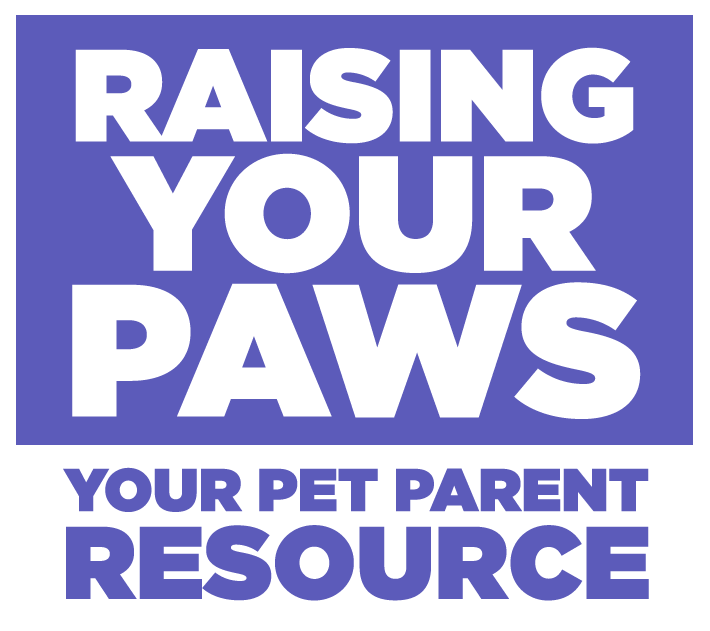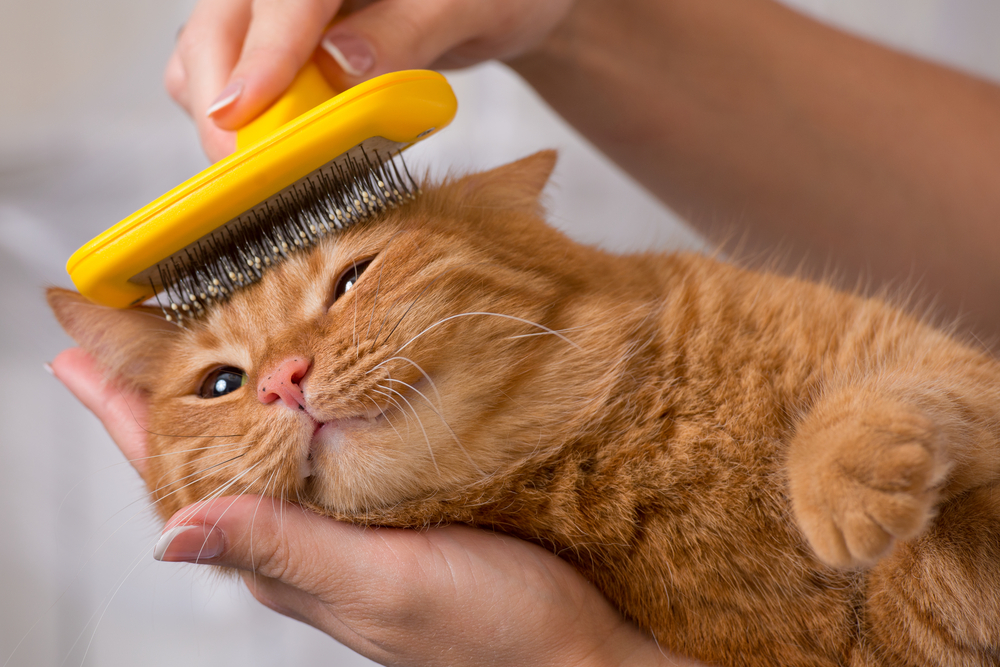In this week’s episode of Raising Your Paws, (listen below) I talked about cat hairballs, why and how they are formed, the two ways your cat gets rid of them and the best thing to do to greatly reduce how often your cat has hairballs.
Prevent your cat from swallowing the hair in the first place which is what happens as they clean themselves. You do this by becoming a partner in grooming. 
No, I don’t mean you have to start licking their fur along with them, you will be combing and brushing them to remove alot of the shed fur so that it cuts down on what they could consume.
Since this is going to be a new life long practice, (remember, you don’t like hairballs and tell yourself it will be worth the time investment)  you’ll want your cat to have positive feelings about the whole brushing, combing experience and actually like it, so to make sure this will be a resounding success, follow these tips.
you’ll want your cat to have positive feelings about the whole brushing, combing experience and actually like it, so to make sure this will be a resounding success, follow these tips.
Pick the right equipment.
Purchase quality grooming tools, meaning the correct kind of combs and brushes. Kittens and cats have very sensitive skin so you need to buy combs that have smooth and rounded teeth such as Teflon coated combs or ones with rolling teeth which glide more easily through the fur, and won’t pull. For brushes, make sure the bristles or nubs are soft enough not to scratch the skin but firm enough to reach through the fur. Avoid combs and brushes with teeth that are sharply pointed. It won’t be a pleasant experience for your cat and could cause injury to their skin.
Teeth of combs are set together in a fine (meaning close), medium or coarse pattern. Medium to coarse combs work well for longhaired cats while the medium to fine ones work best for shorthaired breeds.
Here is something – there are special gloves, that you can wear, called “cat gloves” for the grooming session that short haired cats tend to enjoy alot. They have inset rubber nubs in the palm area that both smooth the fur and remove loose hair. These are a favorite of cats because the action seems like you are simply petting them.
Make it a routine.
Your goal is that the cat learns to expect and relish the experience. Daily brushing is recommended for all cats during the shedding seasons, (spring and summer) especially important for longhaired cats, and if there are changes in the house that could cause stress for your cat. Stress felt by felines causes excessive shedding. For shorthaired cats, grooming a few times a week, may be enough to make a difference in how much fur gets swallowed but you’ll want to feel this out. See the Facebook page for
Try and pick the same general time of day and the same place. Use a tabletop, some other platform or even your lap to place kitty. Wherever is going to be convenient and comfortable for you both. Some people like to place the cat on a towel on the top of the washer or dryer. The height is good and you have space to set out your combs and brushes.
Set up for success.
Before starting this new lifetime practice, help your kitten or cat (if they have never been groomed by you before) to get used to the idea. The end result is that you want combing and brushing to be perceived as simply an extension of petting. So, several days before you actually begin being your cat’s hair dresser, leave the comb and brush out among your cats toys. Let them sniff and investigate these new strange items. You want them to be part of their territory, a normal part of their life that becomes familiar, so those things are not scary. Let your cat play with the brush. You know your cat is feeling comfy with it if she rubs against it with her face, she’s marking it, putting her scent on it.
Make it a ritual they will like.
Begin the session by petting your cat. Run your hands all over them in the places you will be combing – from the top of her head, down her back, under her arms to the end of the tail. This will tell you in advance if there are any mats you could come upon unexpectedly that will take special care, and will relax your cat in preparation for the grooming.
Do you know where your cats’ sweet spots are? These are his favorite places to be petted and rubbed. They often include cheeks, chin and throat, and the place right above the base of the tail. These sweet spots cause kitty to shut their eyes, purr louder or raise their butts. Begin your combing or brushing session in these sweet spots.
Once you have the comb or brush in hand, start with a very light touch. Kittens especially have very tender skin. Think of it as lightly scratching the skin rather than a brushing. Your kitty will tell you how to proceed, often arching his back into the brush when he wants a heavier stroke.
Carefully comb your cats face, pay attention to the mat-prone area around the ears, then progress down both of the cats sides. Be careful not to brush or comb too hard, especially against her spine or nipples. If your cat figgets a lot while combing it’s sides while its standing, try lifting one rear foot off the ground while you groom the other side. This takes away the cats balance, and distracts it so its thinking about something besides the grooming.
Mostly, take your time. You do not have to groom the entire cat in one session. If it gets irritated at some point, just stop and finish at a later time.
Now finish the grooming session the way you started, by returning to those sweet spots. Once finished, offer your cat a favorite game or treat.
That will help him associate the grooming session with positive things so he looks forward to the next time.




0 Comments